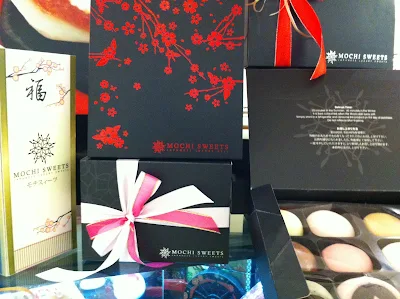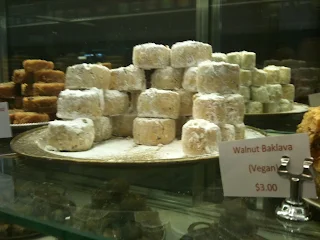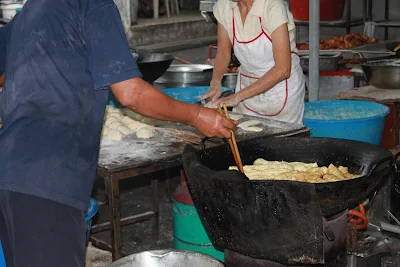I have been drawn in different directions from the feedback I get from friends on this Passion Tree Cafe. We can agree on Zumbo, Christopher The, Pishon and Messina, but I get two waves of strong opinions about this Korean set up above Chatswood rail station.
One, it has desserts that you would come back for, purposefully, and not just because you by chance happen to be near by and need to kill some time off waiting or checking the smart phone.
Two, some things are not what they make you expect to be and some are rather pricey for what you get. The coffee is so so and not comparable with those dished out by hipster bearded guys at rustic looking dug outs across the Sydney landscape.
Peanut bread with honey butter, cakes, chocolate Fondue, macaroons, cheesecakes and Tortes all served here seem to have no issues with my foodie mates.
Two particular servings are at dispute in my network.
Patbingsoo - is it more of the quality of fruit offered, rather than in the making and serving of the whole dish? This comes with rock melon, pineapple or another fruit with more sharp and confronting flavours. This ice shaved dessert has a cousin in Ais Kacang in south-east Asia. Are the flavours not intense enough, or not in harmony, with some ingredients tasting more heavy when eaten with the delicate ones? Is the problem with the granularity of the ice shave? Beans and condensed milk are the usual stuff that you find in Patbingsoo as well.
Pancakes, whether Matcha or Taiwanese or Korean - are they not at the right texture, taste and flavour? The basic things in pancakes are eggs, milk and butter, but I reckon the debate with my mates is whether there is sufficient flavour drawn out from them. I realise delicate things do create problems and are not that easy in pleasing every one.
One thing I am firm in my opinion about is the extent to which the Passion Tree Cafe takes in making things pretty looking. It is not just those colourful desserts, mainly from fruity inspirations, but also in the clean white interiors, the spaciousness and high ceilings, the white painted chairs and in those same designed chairs hanging from the ceiling. The surrounding impression of white background - just perhaps reminding me of K-Pop music videos at times - can bring out better the contrasting colours of the cafe's menu offerings.
On a lazy Sunday arvo, there were many youngsters flowing out from the tuition centres ala Chatswood - and added to that there were school kids from performances in the nearby Concourse. Several were obviously multi-tasking - doing homework, dating, keeping up with social media and in cyberspace. As it was a nippy day, many were in better looking clothes, not as sloppy when it is summer in Sydney.
To me, the ambiance is tropical, East Asian and fruity. Passion Tree hails from Queensland.
Intense red from those carved out watermelon balls seems to jump out of some one's order or floating intensely as the wait staff carries it on a tray. Then it is the drizzle effect with the presentation - the lines or dots can surround a stack, a centre piece or around a yummy thing. And one more thing coming here.....the more people the better, to share in the many delights. Kids and teenagers especially will appreciate this place.
The Passion Tree Cafe is located at T67, 436 Victoria Avenue, Chatswood Interchange in Chatswood NSW.
Opening hours are from 1130am to 1000pm every day, with last orders taken by 930pm.
My impressions of the Passion Tree Cafe in Chatswood NSW:
Ambiance: 3.5 out of 5
Customer Engagement: 3.5 out of 5
Culinary Delight: 3 out of 5
X Factor: 3 out of 5
Overall: 13/4 out of 5
Recommended Menu choices:
Honey bread.
Salted caramel popcorn on waffles.
Chocolate Fondue.
Macaroons.
Culinary Delight: 3 out of 5
X Factor: 3 out of 5
Overall: 13/4 out of 5
Recommended Menu choices:
Honey bread.
Salted caramel popcorn on waffles.
Chocolate Fondue.
Macaroons.

















































